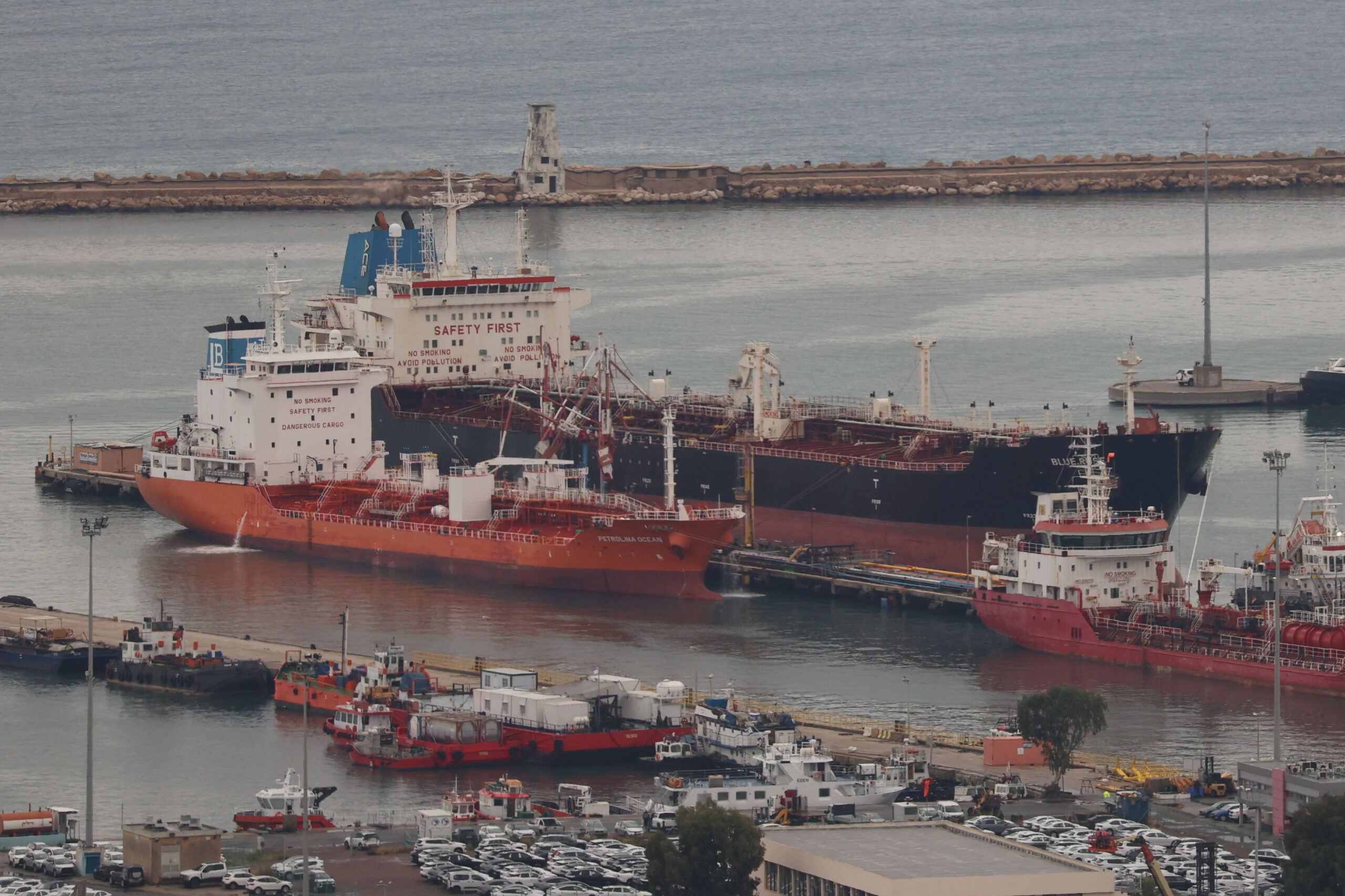Shadow Fleet at the Quay: The Blue Rose Case
The latest image of Haifa Port captures BLUE ROSE clearly — a black-hulled tanker moored behind the orange chemical vessel Petrolina Ocean, positioned at what appears to be an active refinery discharge berth. The vessel name is readable on the starboard bow, confirming identification rather than inference. From a logistics standpoint, this is a routine port call. In a sanctions-monitoring context, it is significant.

Source: Israel News, Shot with Canon R8
Multiple open-source vessel-tracking entries show BLUE ROSE (IMO 9335915) frequently routing between the eastern Mediterranean and Novorossiysk, Russia’s primary Black Sea oil export terminal. That alone doesn’t indicate sanctions avoidance — Novorossiysk exports both capped and non-capped grades — but it aligns with documented behavior of vessels used in Russia’s expanding “shadow fleet.” These tankers move Russian oil outside the Western financial and compliance ecosystem established after the 2022 sanctions and G7 price-cap framework.
The mechanics of this parallel fleet are now well-documented: aging tankers transferred to opaque ownership structures, re-flagged under permissive registries, insured outside major P&I clubs, and tracked by traffic patterns rather than declarations. Many disappear from AIS during ship-to-ship transfers near Malta, Ceuta, the Laconian Gulf or offshore Tukey, where crude may be blended, renamed, or re-papered. The goal is simple — obscure origin and market destination while staying technically compliant or at least deniable.
BLUE ROSE has already appeared in several investigations linking it to Alkagesta Ltd, a Maltese intermediary cited in reporting for arranging logistics and documentation for Russian-origin crude under alternative labels. Paired with its recurring Novorossiysk routing, registry structure, and appearance at a refinery berth, the risk flags are procedural rather than speculative.
There is no evidence at this time that the cargo currently onboard violates sanctions. Tankers serving Russian terminals can still legally supply buyers as long as documentation and pricing comply with regulatory frameworks. But vessels with documented sanction-risk histories require a different level of scrutiny from port authorities, insurers, bunker suppliers and downstream buyers.
In short:
BLUE ROSE is operating publicly, but not cleanly.
Her presence in Haifa demonstrates how the shadow fleet increasingly intersects with mainstream supply chains rather than operating offshore or invisibly. The regulatory challenge now isn’t locating these vessels — it’s determining whether each voyage complies with law, or simply with plausible deniability.
For transport operators and compliance teams, this case underlines the current reality: the shadow fleet is no longer theoretical or remote. It is berthing at regulated terminals, handling refinery cargoes, and navigating the same waters as compliant tonnage — only with paperwork that demands reading twice.